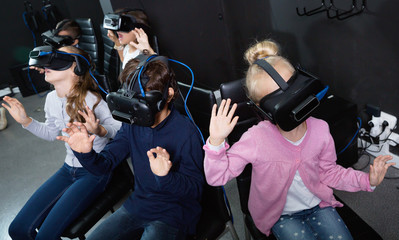Comprehensive Instructional Guide to Online “Escape Rooms”
There are several benefits to having remote teams, which is why more and more organizations are adopting this strategy. There are, however, drawbacks as well. Since everyone is spread out, it’s challenging to have a unified team-building activity or even have everyone in the same room simultaneously. Fortunately, many companies have tools at their disposal, such as the virtual reality experience escape room, to deal with this problem.

This is why Digital Escape Rooms are perfect for Distributed Teams
Teamwork and communication skills will be tested as staff work together to solve these virtual escape puzzles. In this setting, individuals are able to get to know one another on a more casual basis, and this facilitates the discovery of each other’s individual strengths and shortcomings. It’s a terrific opportunity for remote workers to relax and socialise together. They’ll pick up teamwork skills as they divide up responsibilities, pool resources, and brainstorm solutions to problems together.
Definition of a “Virtual Escape Room”
There is a lot of similarity between a real-life escape room and its online counterpart. You’ll divide your staff into teams, and everyone in those groups will have to work together to uncover clues, solve riddles, and figure out how to escape the chamber before the other groups do or before the clock runs out of time. In real life, you may have to rummage through a bunch of drawers or look for a set of keys. Obviously, it can’t happen in a digital version of an escape room, but we think our original riddles will keep you just as entertained.
What is the concept behind virtual escape rooms?
In a virtual escape room, your team has access to documents, videos, puzzles, and more. Everything is online, so it’s simple to watch a video or click a link to another site. In order to solve the puzzles, teams will need to carefully watch and listen to the videos provided or scour the website’s content.
It is not only a viable option, but it is frequently advised, to use Google as a research tool. A virtual escape game can be even more realistic than its physical counterpart because players always have the option to conduct an online search for clues. In addition to fostering cooperation among workers, this activity demonstrates how to properly structure a search query in order to get the desired results.
When a team successfully completes the puzzles in an escape room, the “exit” will unlock, and a message of congratulations will be shown. If they have some time to kill while waiting for the other teams to finish, they can keep chatting and getting to know one another.
Conclusion:
Virtual reality enables training that is not just different but also more fun by creating an environment that simulates reality yet is controlled. It helps teams train together to enhance efficiency and create a safer and more productive work environment for everyone, which is a genuine advantage to the students who participate in the program. Not only is vr experience not a marketing gimmick, but it also makes a great deal of practical and commercial sense.

